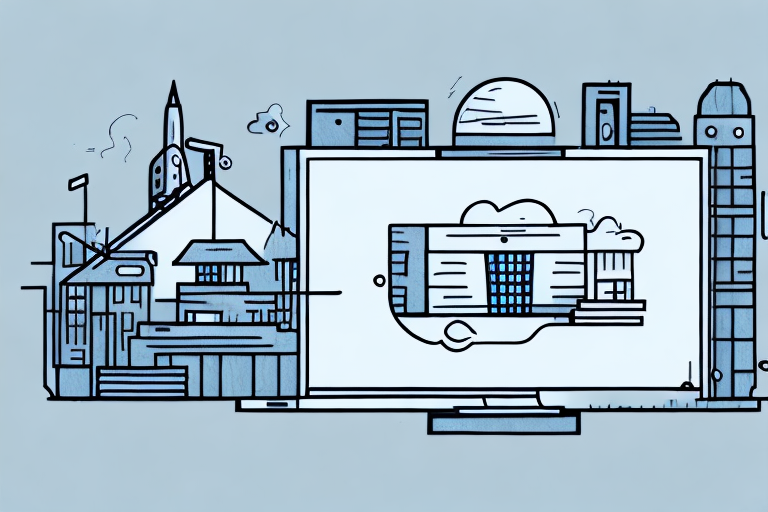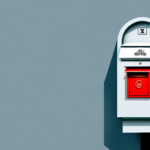How to Create a Successful Building Product Configurator
In today's digital age, customers expect immediate access to information and options that align with their unique needs and preferences. As a result, building product configurators have become increasingly popular, allowing customers to customize and visualize building products to fit their specific requirements. However, the key to creating a successful building product configurator lies in understanding your target audience, choosing the right tools and design, and measuring performance metrics to track its ROI.
The Benefits of a Building Product Configurator
Building product configurators offer numerous benefits for both companies and customers. Companies can increase sales by providing a personalized experience that allows customers to build and visualize a custom product in a real-world environment. This personalization leads to higher customer satisfaction and loyalty, as users receive products that perfectly fit their specific needs. Additionally, configurators can reduce the number of returns and complaints by offering a clear visualization of the final product.
Moreover, building product configurators streamline the production process. By offering pre-approved options, companies can minimize the time and resources needed to create custom products, resulting in faster turnaround times and lower costs for both the company and the customer. Configurators also gather valuable data on customer preferences and trends, informing future product development and marketing strategies.
According to a McKinsey report, personalized experiences can deliver 5 to 8 times the ROI on marketing spend and can lift sales by 10% or more.
Understanding Your Target Audience to Create the Perfect Configurator
A successful building product configurator caters to the needs of a specific target audience. Conducting thorough market research to determine your audience's needs, preferences, and behaviors is essential. Analyzing customer data, such as demographics, psychographics, and purchasing behavior, can yield valuable insights into creating a configurator that meets their unique requirements. By understanding your target audience, you can guide the development process and ensure the final product aligns perfectly with their needs.
User experience is a critical aspect when creating a building product configurator. The configurator should be easy to use and navigate, with clear instructions and an intuitive design. Conducting user testing and gathering feedback from your target audience can help identify pain points or areas for improvement in the configurator's user experience. Prioritizing user experience ensures that the configurator not only meets your audience's needs but also provides a seamless and enjoyable experience.
Choosing the Right Tools and Platforms for Your Building Product Configurator
The technology powering your building product configurator can significantly impact its success. Several platforms and tools can help companies build robust configurators that are user-friendly and customizable. For instance, virtual reality (VR) and augmented reality (AR) platforms offer customers an immersive experience, while web-based tools are more affordable and easier to implement.
Another crucial factor is the level of support and resources provided by the vendor. Platforms offering extensive documentation, tutorials, and customer support are invaluable when building and maintaining your configurator. Additionally, consider the scalability of the platform, as your configurator may need to handle increased traffic and complexity as your business grows. Carefully evaluating your options and selecting the right tools and platforms will help you create a powerful and effective building product configurator that meets both customer and business needs.
According to Forrester Research, choosing scalable and supportive technology platforms can enhance long-term ROI and adaptability.
Designing Your Building Product Configurator for Ease of Use
Designing a building product configurator that is simple and intuitive can significantly impact its effectiveness. A typical configurator should feature high-quality images and 3D models that load quickly, along with an intuitive interface that guides users step-by-step through the process. Ensuring that the configurator is mobile-responsive and accessible on various devices is also essential in today’s multi-device environment.
Another important aspect is the ability to save and share configurations. Users should be able to save their configurations to return to them later or share them with others for feedback or collaboration. This feature enhances the user experience and increases the likelihood of a successful sale.
Providing clear and concise instructions throughout the configurator process is also vital. This can include tooltips, pop-ups, or short tutorial videos. By offering helpful guidance, users are more likely to complete the configurator process and feel confident in their final product selection.
Best Practices for Testing and Iterating on Your Building Product Configurator
Once your building product configurator is operational, it's crucial to continuously test the platform to ensure everything runs smoothly. Testing should encompass functionality, usability, and user experience to determine the configurator’s effectiveness. Collecting feedback from real customers allows the development team to make iterative improvements, enhancing ease-of-use and functionality. Continuous testing and iteration help perfect the final product, leading to a successful and profitable configurator.
Ensuring compatibility with different devices and browsers is another critical aspect of testing. This means testing the configurator on desktops, laptops, tablets, and smartphones, as well as on browsers like Chrome, Firefox, Safari, and Edge. Ensuring broad compatibility makes the configurator accessible to a wider audience and guarantees proper functionality across different platforms.
Involving your sales and marketing teams in the testing process is a best practice. These teams can provide valuable insights into customer needs and preferences, helping to identify areas for improvement. Collaboration with these teams ensures that the configurator meets both customer expectations and business goals.
Integrating Your Building Product Configurator with Other Marketing Channels
Creating a building product configurator alone is not sufficient; it needs to be part of a broader marketing strategy to maximize its ROI. Proper integration with other marketing channels, such as social media, email marketing, and paid advertising, can enhance its reach and attract more traffic to the platform.
Social media platforms offer excellent opportunities to promote your configurator. Creating engaging posts that showcase the features and benefits of your configurator encourages followers to try it out. Running paid social media campaigns can target specific audiences and drive more traffic to your configurator.
Email marketing is another effective way to integrate your configurator with other channels. Sending personalized emails to subscribers, highlighting the benefits of your configurator, and providing a direct link to access it can increase engagement. Including a call-to-action in your email signature that encourages recipients to try out your configurator can also boost usage.
Measuring Success: Key Metrics to Track for Your Building Product Configurator
The success of a building product configurator depends on several key performance indicators (KPIs) that determine its overall effectiveness. These metrics include usage statistics, user engagement levels, conversion rates, and revenue generated. Regularly evaluating these metrics is essential to identify areas for improvement and to ensure that the configurator is meeting its intended goals.
Additional KPIs to consider include average session duration, bounce rate, and customer satisfaction scores. Tools like Google Analytics and Hotjar can provide detailed insights into how users interact with your configurator, helping you make data-driven decisions for enhancements.
Common Challenges and How to Overcome Them When Creating a Building Product Configurator
Creating a building product configurator comes with several challenges that companies must overcome to ensure success. These challenges include data management, integrating different platforms, finding the right talent, and managing the overall project. By identifying these challenges early and developing comprehensive plans to address them, companies can minimize their impact on the development process and create a smoother, more effective configurator.
One significant challenge is ensuring that the user experience is intuitive and easy to navigate. This requires a deep understanding of end-users and their needs, as well as a focus on creating a user-friendly interface. Companies must also consider the different devices and platforms their configurator will be used on and ensure that it is optimized for each one.
Another challenge is ensuring that the configurator accurately reflects the available products and options. This requires a robust data management system capable of handling large amounts of data and ensuring it is up-to-date and accurate. Companies must also manage customizations and variations, ensuring the configurator can handle these without errors or delays.
Tips for Promoting Your Building Product Configurator and Driving Traffic to Your Website
To ensure that customers are aware of your building product configurator, effective promotion is essential. Utilizing marketing channels such as social media, email marketing, and paid advertisements can help promote the configurator to a large audience. Additionally, optimizing the platform using SEO best practices, including incorporating relevant keywords and phrases, can improve its visibility and drive more traffic to your website.
Partnering with industry influencers and bloggers is another effective promotional strategy. These individuals have large followings and can help spread the word about your configurator to their audiences. Offering incentives or rewards to customers who use the configurator and share their experiences on social media or leave reviews on your website can create buzz around your product and encourage more people to try it out.
Case Studies: Real-World Examples of Successful Building Product Configurators
Learning from real-world examples of successful building product configurators can provide valuable insights into the development process and strategies that work best. Various case studies highlight how companies have effectively implemented configurators to enhance customer experience and drive sales. Analyzing these examples can help you develop effective strategies for your own projects.
- Example 1: Autodesk uses its configurator to allow customers to customize software packages based on their specific needs, increasing user satisfaction and sales.
- Example 2: Home Depot offers product configurators for kitchen and bathroom designs, enabling customers to visualize their space before making a purchase.
- Example 3: IKEA uses configurators for furniture customization, allowing customers to see how products fit in their homes.
Future Trends and Innovations in the Building Product Configuration Space
The future of building product configuration is promising, with several innovations and emerging trends set to revolutionize the industry. The integration of artificial intelligence (AI) and machine learning can enhance the user experience by offering personalized recommendations and automating complex configurations. Additionally, the use of virtual reality (VR) and augmented reality (AR) provides more immersive experiences, allowing customers to interact with products in a virtual space.
Blockchain technology is also emerging as a tool for ensuring data security and transparency in product configurations. Furthermore, the rise of Internet of Things (IoT) devices can enable real-time updates and interactions within configurators, providing a more dynamic and responsive user experience.
Staying informed about these trends and integrating relevant technologies into your building product configurator can help your business remain competitive and meet evolving customer expectations.
In conclusion, building product configurators offer companies numerous benefits when developed correctly. To build a successful configurator, companies need to conduct thorough market research, choose the right technology, design the platform for ease of use, integrate the tool with other marketing channels, and optimize the platform using SEO best practices. With this comprehensive guide, you'll have all the information needed to create a successful building product configurator that fully meets the needs of your audience.




















